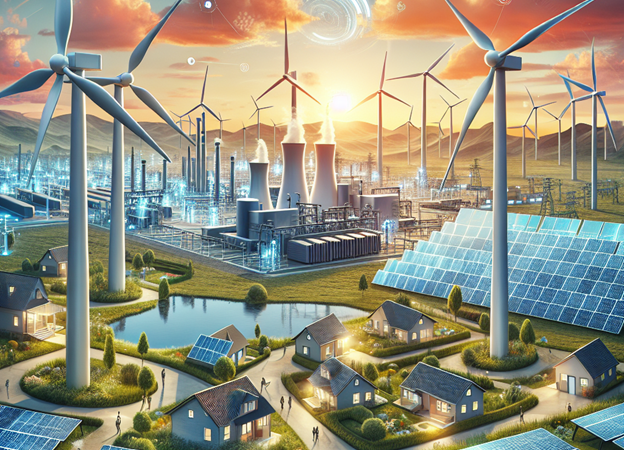As we continue to face the challenges of climate change and environmental degradation, the importance of transitioning to renewable energy sources has never been more crucial. Innovative renewable energy technologies are paving the way for a sustainable future, offering clean, reliable, and efficient alternatives to traditional fossil fuels. In this article, I will explore some
As we continue to face the challenges of climate change and environmental degradation, the importance of transitioning to renewable energy sources has never been more crucial. Innovative renewable energy technologies are paving the way for a sustainable future, offering clean, reliable, and efficient alternatives to traditional fossil fuels. In this article, I will explore some of the most cutting-edge renewable energy solutions that are revolutionizing the way we power our world.
Solar Energy

Image by : Yandex
One of the most well-known and widely used forms of renewable energy is solar power. Solar panels harness the energy of the sun to generate electricity, making it a clean and abundant source of power. Advances in solar technology have made it more affordable and efficient than ever before, with new innovations such as thin-film solar cells and solar shingles expanding its applications.
Solar energy is not only environmentally friendly, but also cost-effective in the long run. By installing solar panels on rooftops or in solar farms, individuals and businesses can reduce their reliance on grid electricity and lower their energy bills. In addition, solar power systems can be combined with energy storage solutions such as batteries to provide round-the-clock electricity, even when the sun is not shining.
Wind Energy
Another key player in the renewable energy sector is wind power. Wind turbines convert the kinetic energy of the wind into electricity, offering a clean and renewable alternative to fossil fuels. Offshore wind farms, in particular, have the potential to generate large amounts of energy in areas with strong and consistent winds.
Advancements in wind turbine technology have led to the development of larger, more efficient turbines that can capture more wind energy and produce higher outputs. In addition, innovations such as floating wind turbines and vertical-axis turbines are expanding the possibilities for harnessing wind power in a variety of environments.
Hydropower
Image by : Yandex.com
Hydropower, or the generation of electricity from flowing water, has been a reliable source of renewable energy for centuries. Dams and hydroelectric power plants use the force of water to turn turbines and generate electricity, providing a sustainable and emissions-free energy source.
New developments in hydropower technology, such as run-of-river systems and tidal energy generators, are making it possible to tap into the power of water in more diverse and innovative ways. These technologies have the potential to provide clean energy solutions for regions with abundant water resources, as well as for coastal areas where tidal currents can be harnessed for power generation.
Geothermal Energy
Geothermal energy utilizes the heat stored beneath the Earth’s surface to generate electricity and heat buildings. By tapping into geothermal reservoirs, power plants can produce reliable and consistent energy without the need for fuel combustion, making it a clean and sustainable energy source.
Advances in geothermal technology, such as enhanced geothermal systems and geothermal heat pumps, are expanding the potential for geothermal energy production in a wider range of locations. These innovations are making it possible to harness the Earth’s heat more efficiently and economically, paving the way for increased adoption of geothermal energy as a renewable power source.
Bioenergy

Image by : Yandex
Bioenergy is derived from organic materials such as plants, agricultural residues, and waste products, which are converted into biofuels and biogas for energy production. Biomass power plants and biofuel refineries use these materials to generate electricity, heat, and transportation fuels, offering a renewable alternative to fossil fuels.
Innovations in bioenergy technology, such as advanced biofuels and bioenergy crops, are improving the efficiency and sustainability of bioenergy production. By utilizing waste materials and sustainable feedstocks, bioenergy can help reduce greenhouse gas emissions and promote a circular economy by turning organic waste into valuable energy resources.
Conclusion
In conclusion, innovative renewable energy technologies are transforming the way we power our world, offering clean, sustainable, and efficient alternatives to traditional fossil fuels. From solar and wind power to hydropower, geothermal energy, and bioenergy, these cutting-edge solutions are driving the transition towards a more sustainable energy future.
By investing in and adopting these innovative renewable energy technologies, we can reduce our reliance on fossil fuels, lower greenhouse gas emissions, and mitigate the impacts of climate change. As we continue to advance and expand these renewable energy options, we can create a more resilient and sustainable energy system for generations to come. Let us embrace the power of innovation and renewable energy to build a cleaner, greener future for all.
















